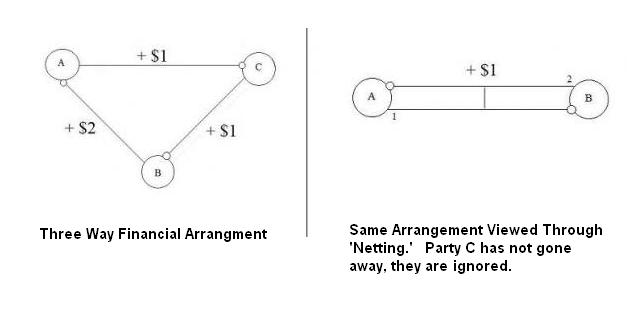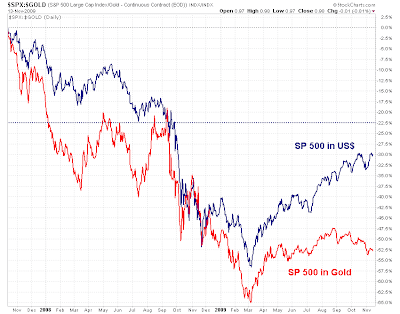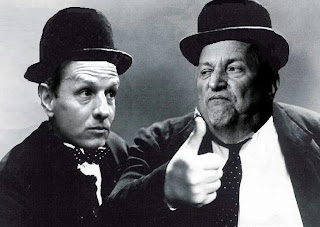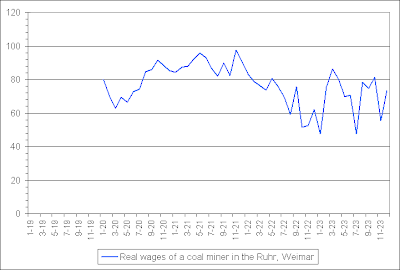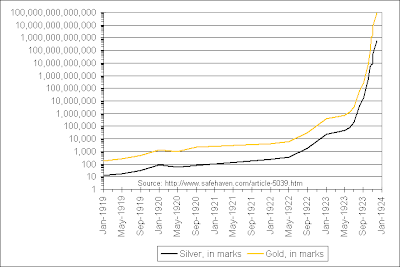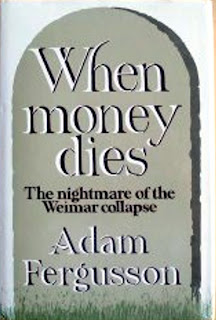Presented here is a summary of the major instances of inflation post World War II.
Although each country had its particular set of conditions and triggers for their painful experience of monetary inflation, the most common thread seems to be unpayable debts due to war or civil and societal dislocation.
Particularly strong labor union movements or protectionist policies against offshoring and imports do not appear to be common factors.
An expanded list with additional countries including the pre WWII era can be found at Wikipedia.
Inflation is the common condition of a fiat monetary system. Less probable outcomes are hyperinflation and deflation, with a serious inflation and disinflation nearer the norm.
Hyperinflation is normally associated with some outlier event in the political sphere and/or a series of policy errors by the monetary authority. Hyperinflation is more common when associated with an external monetary standard, but this is not a prerequisite.
Although not uncommon for a short term (less than one year) after unusual and intense monetary expansion, normally referred to as deleveraging or disinflation, a true deflation is a relatively rare phenomenon, especially in fiat currency regimes, usually attributable to a protracted series of policy errors or intentional actions to contract the money supply by a nation's monetary authority. The most familiar instances of a significant deflation are the Great Depression, particularly in the United States, and Japan during the 1990's.
Angola
Angola went through its worst inflation from 1991 to 1995.
In early 1991, the highest denomination was 50,000 kwanzas. By 1994, it was 500,000 kwanzas. In the 1995 currency reform, 1 kwanza reajustado was exchanged for 1,000 kwanzas. The highest denomination in 1995 was 5,000,000 kwanzas reajustados. In the 1999 currency reform, 1 new kwanza was exchanged for 1,000,000 kwanzas reajustados. The overall impact of hyperinflation: 1 new kwanza = 1,000,000,000 pre 1991 kwanzas.
Argentina
Argentina went through steady inflation from 1975 to 1991.
At the beginning of 1975, the highest denomination was 1,000 pesos. In late 1976, the highest denomination was 5,000 pesos. In early 1979, the highest denomination was 10,000 pesos. By the end of 1981, the highest denomination was 1,000,000 pesos. In the 1983 currency reform, 1 Peso argentino was exchanged for 10,000 pesos. In the 1985 currency reform, 1 austral was exchanged for 1,000 pesos argentinos. In the 1992 currency reform, 1 new peso was exchanged for 10,000 australes. The overall impact of hyperinflation: 1 (1992) peso = 100,000,000,000 pre-1983 pesos.
Belarus
Belarus went through steady inflation from 1994 to 2002.
In 1993, the highest denomination was 5,000 rublei. By 1999, it was 5,000,000 rublei. In the 2000 currency reform, the ruble was replaced by the new ruble at an exchange rate of 1 new ruble = 1,000 old rublei. The highest denomination in 2008 was 100,000 rublei, equal to 100,000,000 pre-2000 rublei.
Bolivia
Bolivia went through its worst inflation between 1984 and 1986.
Before 1984, the highest denomination was 1,000 pesos bolivianos. By 1985, the highest denomination was 10 Million pesos bolivianos. In 1985, a Bolivian note for 1 million pesos was worth 55 cents in US dollars, one-thousandth of its exchange value of $5,000 less than three years previously. In the 1987 currency reform, the Peso Boliviano was replaced by the Boliviano at a rate of 1,000,000 : 1.
Bosnia-Herzegovina
Bosnia-Hezegovina went through its worst inflation in 1993.
In 1992, the highest denomination was 1,000 dinara. By 1993, the highest denomination was 100,000,000 dinara. In the Republika Srpska, the highest denomination was 10,000 dinara in 1992 and 10,000,000,000 dinara in 1993. 50,000,000,000 dinara notes were also printed in 1993 but never issued.
Brazil
From 1986 to 1994, the base currency unit was shifted three times to adjust for inflation in the final years of the Brazilian military dictatorship era. A 1967 cruzeiro was, in 1994, worth less than one trillionth of a US cent, after adjusting for multiple devaluations and note changes. A new currency called real was adopted in 1994, and hyperinflation was eventually brought under control. The real was also the currency in use until 1942; 1 (current) real is the equivalent of 2,750,000,000,000,000,000 of those old reals
Chile
Beginning in 1971, during the presidency of Salvador Allende, Chilean inflation began to rise and reached peaks of 1,200% in 1973. As a result of the hyperinflation, food became scarce and overpriced. A 1973 coup d'état deposed Allende and installed a military government led by Augusto Pinochet. Pinochet's free-market economic policy ended the inflation and except for an economic depression in 1981 the economy has recovered. Overall impact of the inflation: 1 current Chilean Peso = 1,000 Escudos.
China
The Republic of China went through the worst inflation 1948-49.
In 1947, the highest denomination was 50,000 yuan. By mid-1948, the highest denomination was 180,000,000 yuan. The 1948 currency reform replaced the yuan by the gold yuan at an exchange rate of 1 gold yuan = 3,000,000 yuan. In less than 1 year, the highest denomination was 10,000,000 gold yuan. In the final days of the civil war, the Silver Yuan was briefly introduced at the rate of 500,000,000 Gold Yuan. Meanwhile the highest denomination issued by a regional bank was 6,000,000,000 yuan (issued by XinJiang Provincial Bank in 1949). After the renminbi was instituted by the new communist government, hyperinflation ceased with a revaluation of 1:10,000 old Renminbi in 1955.
Georgia
Georgia went through its worst inflation in 1994.
In 1993, the highest denomination was 100,000 coupons [kuponi]. By 1994, the highest denomination was 1,000,000 coupons. In the 1995 currency reform, a new currency lari was introduced with 1 lari exchanged for 1,000,000 coupons.
Israel
Inflation accelerated in the 1970s, rising steadily from 13% in 1971 to 111% in 1979. From 133% in 1980, it leaped to 191% in 1983 and then to 445% in 1984, threatening to become a four-digit figure within a year or two. In 1985 Israel froze all prices by law. That same year, inflation more than halved, to 185%. Within a few months, the authorities began to lift the price freeze on some items; in other cases it took almost a year. By 1986, inflation was down to 19%.
Madagascar
The Malagasy franc had a turbulent time in 2004, losing nearly half its value and sparking rampant inflation.
On 1 January 2005 the Malagasy ariary replaced the previous currency at a rate of one ariary for five Malagsy francs. In May 2005 there were riots over rising inflation, although falling prices have since calmed the situation.
Nicaragua
Nicaragua went through the worst inflation from 1987 to 1990.
From 1943 to April 1971, one US dollar equalled 7 córdobas. From April 1971 to early 1978, one US dollar was worth 10 córdobas. In early 1986, the highest denomination was 10,000 córdobas. By 1987, it was 1,000,000 córdobas. In the 1988 currency reform, 1 new córdoba was exchanged for 10,000 old córdobas. The highest denomination in 1990 was 100,000,000 new córdobas. In the 1991 currency reform, 1 new córdoba was exchanged for 5,000,000 old córdobas. The overall impact of hyperinflation: 1 (1991) córdoba = 50,000,000,000 pre-1988 córdobas.
Peru
Peru went through its worst inflation from 1988 to 1990.
In the 1985 currency reform, 1 inti was exchanged for 1,000 soles. In 1986, the highest denomination was 1,000 intis. But in September 1988, monthly inflation went to 132%. In August 1990, monthly inflation was 397%. The highest denomination was 10,000,000 intis by 1991. In the 1991 currency reform, 1 nuevo sol was exchanged for 1,000,000 intis. The overall impact of hyperinflation: 1 nuevo sol = 1,000,000,000 (old) soles.
Poland
Poland went through its worst inflation between 1990 and 1993.
The highest denomination in 1989 was 200,000 zlotych. It was 1,000,000 zlotych in 1991 and 2,000,000 zlotych in 1992. In the 1994 currency reform, 1 new zloty was exchanged for 10,000 old zlotych.
Romania
Romania is still working through steady inflation.
The highest denomination in 1998 was 100,000 lei. By 2000 it was 500,000 lei. In early 2005 it was 1,000,000 lei. In July 2005 the leu was replaced by the new leu at 10,000 old lei = 1 new leu. Inflation in 2005 was 9%. In 2006 the highest denomination is 500 lei (= 5,000,000 old lei).
Russia
In 1992, the first year of post-Soviet economic reform, inflation was 2,520%, the major cause being the decontrol of most prices in January. In 1993 the annual rate was 840%, and in 1994, 224%. The ruble devalued from about 40 r/$ in 1991 to about 30,000 r/$ in 1999.
Turkey
Throughout the 1990s Turkey dealt with severe inflation rates that finally crippled the economy into a recession in 2001. The highest denomination in 1995 was 1,000,000 lira. By 2005 it was 50,000,000 lira. Recently Turkey has achieved single digit inflation for the first time in decades, and in the 2005 currency reform, introduced the New Turkish Lira; 1 was exchanged for 1,000,000 old lira.
Ukraine
Ukraine went through its worst inflation between 1993 and 1995.
In 1992, the Ukrainian karbovanets was introduced, which was exchanged with the defunct Soviet ruble at a rate of 1 UAK = 1 SUR. Before 1993, the highest denomination was 1,000 karbovantsiv. By 1995, it was 1,000,000 karbovantsiv. In 1996, during the transition to the Hryvnya and the subsequent phase out of the karbovanets, the exchange rate was 100,000 UAK = 1 UAH. This translates to a hyperinflation rate of approximately 1,400% per month. And to this day Ukraine holds the world record for most inflation in one calendar year, which was set in 1993.
Yugoslavia
Yugoslavia went through a period of hyperinflation and subsequent currency reforms from 1989 to 1994.
The highest denomination in 1988 was 50,000 dinars. By 1989 it was 2,000,000 dinars. In the 1990 currency reform, 1 new dinar was exchanged for 10,000 old dinars. In the 1992 currency reform, 1 new dinar was exchanged for 10 old dinars. The highest denomination in 1992 was 50,000 dinars. By 1993, it was 10,000,000,000 dinars. In the 1993 currency reform, 1 new dinar was exchanged for 1,000,000 old dinars. But before the year was over, the highest denomination was 500,000,000,000 dinars. In the 1994 currency reform, 1 new dinar was exchanged for 1,000,000,000 old dinars. In another currency reform a month later, 1 novi dinar was exchanged for 13 million dinars (1 novi dinar = 1 German mark at the time of exchange). The overall impact of hyperinflation: 1 novi dinar = 1027 pre 1990 dinars. Yugoslavia's rate of inflation hit 5 × 1015 percent cumalative inflation over the time period 1 October 1993 and 24 January 1994.
Zaire (now the Democratic Republic of the Congo)
Zaire went through a period of inflation between 1989 and 1996.
In 1988, the highest denomination was 5,000 zaires. By 1992, it was 5,000,000 zaires. In the 1993 currency reform, 1 nouveau zaire was exchanged for 3,000,000 old zaires. The highest denomination in 1996 was 1,000,000 nouveaux zaires. In 1997, Zaire was renamed the Congo Democratic Republic and changed its currency to francs. 1 franc was exchanged for 100,000 nouveaux zaires. The overall impact of hyperinflation: 1 franc = 3 × 1011 pre 1989 zaires.
Zimbabwe
At Independence in 1980, the Zimbabwe dollar was worth about USD 1.25. Since then, rampant inflation and the collapse of the economy have severely devalued the currency, causing many organisations to favour using the US dollar or South African rand instead.

